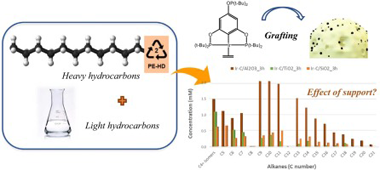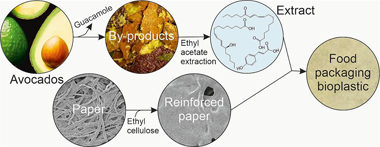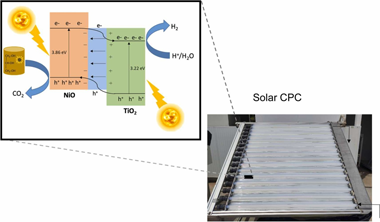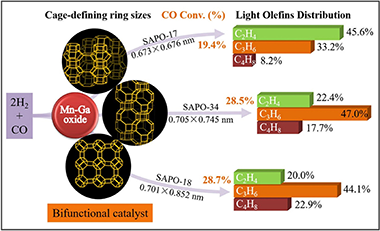Artículos SCI
2023
2023
Química de Superficies y Catálisis
Alkane metathesis over immobilized pincer-ligated iridium complexes: Effect of support nature
Megías-Sayago, C; Centeno-Vega, I; Bobadilla, LF; Ivanova, S; Rendon, N; Suarez, AApplied Catalysis B-Environmental, 338 (2023) 123002
Show abstract ▽

In this work, catalytic alkane metathesis has been evaluated as a suitable approach to upcycle hydrocarbons (polyolefins) at moderate temperatures. To this end, a pincer-ligated iridium complex (dehydrogenation catalyst) has been combined with a rhenium-based (metathesis) catalyst, being the effect of immobilizing the Ir complex over different supports deeply investigated. FTIR spectroscopy has been used to confirm the complex grafting and to elucidate the anchoring site to the support. Additionally, the supports have been dehydroxylated at different conditions to evaluate its possible impact in both the complex grafting and the catalytic activity. The influence of the support nature and its participation in the catalytic reaction have been clearly evidenced.
Diciembre, 2023 | DOI: 10.1016/j.apcatb.2023.123002
Materiales de Diseño para la Energía y Medioambiente
Incorporation of bioactive compounds from avocado by-products to ethyl cellulose-reinforced paper for food packaging applications
Acquavia, MA; Benitez, JEJ; Bianco, G; Crescenzi, MA; Hierrezuelo, J; Grife-Ruiz, M; Romero, D; Guzman-Puyol, S; Heredia-Guerrero, JAFood Chemistry, 429 (2023) 136906
Show abstract ▽

Reinforced films were fabricated by impregnating paper in ethyl cellulose solutions. After solvent evaporation, the infused ethyl cellulose acted as binder of the paper microfibres and occupied the pores and cavities, thus improving the mechanical and barrier properties. To prepare active films, avocado by-products from guacamole industrial production were extracted in ethyl acetate. Then, the extract (optimized to be rich in phenolic compounds and flavonoids and mainly composed by lipids) was incorporated to the paper reinforced with the highest content of ethyl cellulose. In general, the addition of the avocado by-products extract decreased the water uptake and permeability, improved the wettability, and increased the biodegradability in seawater and the antioxidant capacity. In addition, these films acted as barriers and retainers for Escherichia coli and Bacillus cereus. The potentiality of these materials for food packaging was demonstrated by low overall migrations and a similar food preservation to common low-density polyethylene.
Diciembre, 2023 | DOI: 10.1016/j.foodchem.2023.136906
Materiales y Procesos Catalíticos de Interés Ambiental y Energético
Photoreforming of glycerol to produce hydrogen from natural water in a compound parabolic collector solar photoreactor
Villachica-Llamosas, JG; Sowik, J; Ruiz-Aguirre, A; Colón, G; Peral, J; Malato, SJournal of Environmental Chemical Engineering, 11 (2023) 111216
Show abstract ▽

To improve TiO2 for H2 generation, one strategy for the separation of photogenerated charges is the formation of heterostructures with other materials. In particular, NiO is a photocatalyst known for its good stability and low cost. However, no studies at pilot scale using solar energy have been described. Consequently, an evaluation of a physical NiO:TiO2 mixture at pilot scale (25 L) with natural irradiation (2.10 m2 of sun-exposed surface) and with simultaneous glycerol photoreforming was explored. NiO:TiO2 50 mg & sdot;L- 1 resulted in the highest hydrogen production, showing an STH = 1.44%, considering only the UV fraction of the solar irradiation. H2 and CO2 production were analysed by on-line GC; Glycerol, dissolved organic carbon, carboxylic acids and nickel leaching were also evaluated. The NiO:TiO2 mixtures rendered a systematically lower H2 production in natural water than in high-purity water. The increase of ionic strength increased the mean size of particle clusters, promoting rapid sedimentation. All this indicates the importance of testing under real field conditions for attaining reliable solar to hydrogen (STH) efficiency.
Diciembre, 2023 | DOI: 10.1016/j.jece.2023.111216
Química de Superficies y Catálisis
Effect of zeolite topological structure in bifunctional catalyst on direct conversion of syngas to light olefins
Meng, FH; Gong, ZY; Yang, LL; Wang, Q; Xing, MQ; Nawaz, MA; Li, ZMicroporous and Mesoporous Materials, 362 (2023) 112792
Show abstract ▽

Bifunctional catalyst composed of metal oxide and zeolite (OX-ZEO) is a promising strategy for the direct conversion of syngas to light olefins (STO), where the structure of zeolite plays a vital role in determining the selectivity of product. Herein, three kinds of silicoaluminophosphate zeolites with different topological structures, i.e., the ERI(SP17), AEI(SP18) and CHA(SP34), were hydrothermally synthesized, after the combination with Mn-Ga oxide, the prepared OX-ZEO was applied for STO reaction. The variation in the crystallization time for SP17 synthesis has a great impact on the generation of impurity phase of SAPO-5, where a crystallization time of 48-96 h is found to be beneficial in synthesizing SP17 zeolite with pure phase. SP17 zeolite with a crystallization time of 96 h, possesses the micropores and columnar morphology, where the small cage-defining 8-ring size of SP17 shows the olefins selectivity of 87.0% at a low CO conversion of 19.4%, significantly deviating towards the major fraction of ethylene (45.6%) than that of butene (8.2%). In a contrast, SP18 and SP34 zeolites with the same and large cage-defining 8-ring size, are richer in propylene and butene fractions than that of ethylene in overall similar olefins selectivity of 87.0% and 87.1% at CO conversion of 28.7% and 28.5%, respectively. Interestingly, it is further interpreted that the SP17 sample generated more carbon species during the reaction due to the small 8-ring size, while those amounts of carbon species were restricted in the hierarchical pore structure and plate-like morphology in SP18 and SP34 samples.
Diciembre, 2023 | DOI: 10.1016/j.micromeso.2023.112792
Materiales Coloidales
Mn2+-doped MgGeO3 nanophosphors with controlled shape and optimized persistent luminescence
González-Mancebo, D; Arroyo, E; Becerro, AI; Ocaña, MCeramics International, 49 (2023) 36791-36799
Show abstract ▽
Mn2+-doped MgGeO3 (MgGeO3:Mn2+) is an efficient persistent phosphor that emits red luminescence for long time after stopping excitation with UV light. For optical and biotechnological uses a precise control of particle size and shape is highly desired since these parameters may have a strong influence on the properties and suitability of phosphor materials for the intended applications. To the best of our knowledge, MgGeO3:Mn2+ has been synthesized by conventional solid-state-reaction, which yields particles of heterogeneous size and shape. Here, we report for the first time in the literature a salt-assisted method for the synthesis of MgGeO3:Mn2+ nanoparticles with uniform shape (nanorods) and a mean size of 350 nm x 99 nm. The rigorous study of the luminescence properties of the MgGeO3:Mn2+ nanorods revealed that whereas the optimum doping level for photoluminescence was 2.0 mol% Mn2+, the best persistent luminescence was attained with just 0.5 mol% Mn2+, which is ascribed to the different mechanisms of both luminescence processes. The optimum persistent nano-phosphor showed an intense red emission, which persisted at least 17 h after stopping the excitation. Such excellent properties make the developed nanophosphor an attractive candidate for use in optical and biotech-nological applications.
Noviembre, 2023 | DOI: 10.1016/j.ceramint.2023.09.008
- ‹ anterior
- 7 of 410
- siguiente ›














